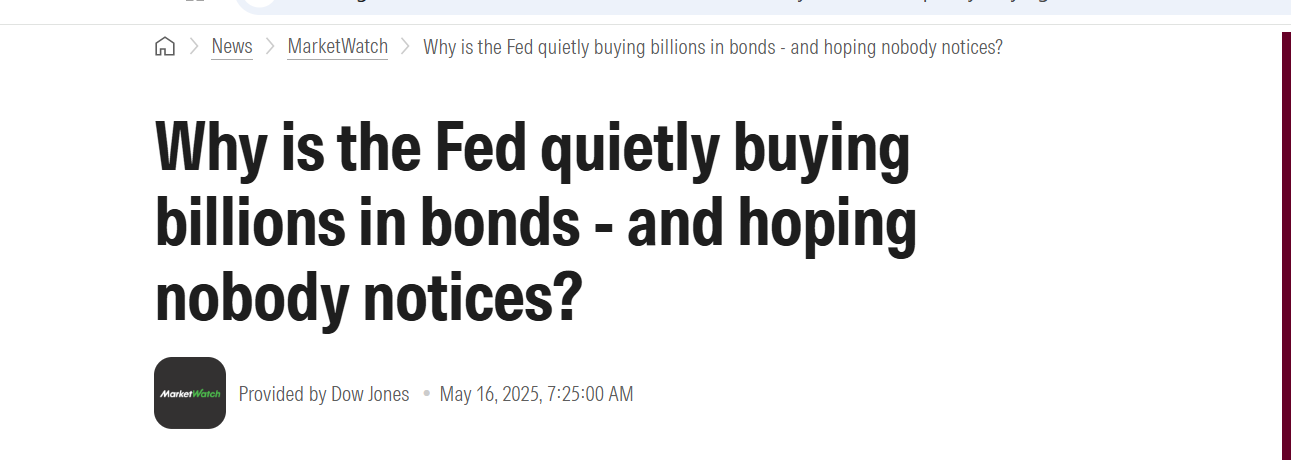Introduction:
The Federal Reserve recently made a stealthy return to quantitative easing, buying $43.6 billion in U.S. Treasuries over four days without public attention. This "stealth QE" is seen as a quiet monetary easing rather than normal policy, signaling concerns about financial stability. The move has fueled rallies in gold and bitcoin, as investors seek alternatives amid growing distrust in fiat currencies and geopolitical tensions. China is also shifting reserves into gold, preparing for potential monetary upheaval. Resource-rich markets like Brazil are benefiting, with commodities and related ETFs surging, as investors position for further dollar weakness and market volatility
The Federal Reserve’s recent bond-buying spree has sparked whispers of a stealth quantitative easing (QE) program, executed with surgical precision under the radar of mainstream media. While officials maintain their quantitative tightening (QT) narrative-reducing the balance sheet by allowing assets to mature-the Fed purchased $43.6 billion in Treasuries over four days in May 2025. These transactions, framed as routine balance sheet management, reveal a central bank walking a tightrope: publicly committing to inflation control while quietly backstopping debt markets.
The Mechanics of “Stealth QE”
The Fed’s balance sheet remains bloated at $6.7 trillion6, down only marginally from its pandemic peak. Under QT, the Fed aims to shrink holdings by letting $5 billion in Treasuries roll off monthly. However, when $76 billion in bonds matured in May 2025, the Fed offset this by buying $71 billion-a net reduction of just $5 billion5. This technical sleight of hand allows the Fed to inject liquidity without expanding the balance sheet, blurring the line between tightening and easing.
Critics argue these purchases mirror QE’s market-distorting effects. By absorbing $34.8 billion in 10-year Treasuries and $20 billion in 3-year notes in targeted operations, the Fed suppresses yields and masks weak demand for U.S. debt. As one analyst noted, “This is QE in all but name-monetizing debt while claiming austerity”.
Media Silence and Market Implications
The lack of media scrutiny is striking. While Powell warns of persistent “supply shocks” and higher long-term rates, the Fed’s actions suggest a different priority: preventing a Treasury market meltdown as $9 trillion in debt rolls over within a year. Commodity markets have sniffed out the tension, with gold soaring 20% since early 20241, a traditional hedge against monetary debasement.
Meanwhile, the fed funds rate remains at 4.25-4.50%, but real-world borrowing costs tell another story. By propping up bond prices, the Fed risks reigniting inflation while undermining its credibility. If investors lose faith in this balancing act, the consequences could dwarf the 2008 crisis.
The Bottom Line
The Fed’s bond-buying pivot-whether labeled “stealth QE” or “QT lite”-exposes a fragile financial system addicted to central bank support. Without transparency, these maneuvers risk distorting markets, eroding trust in the dollar, and setting the stage for a reckoning. As the debt pile grows, the Fed’s next move may hinge less on data than on desperation.




